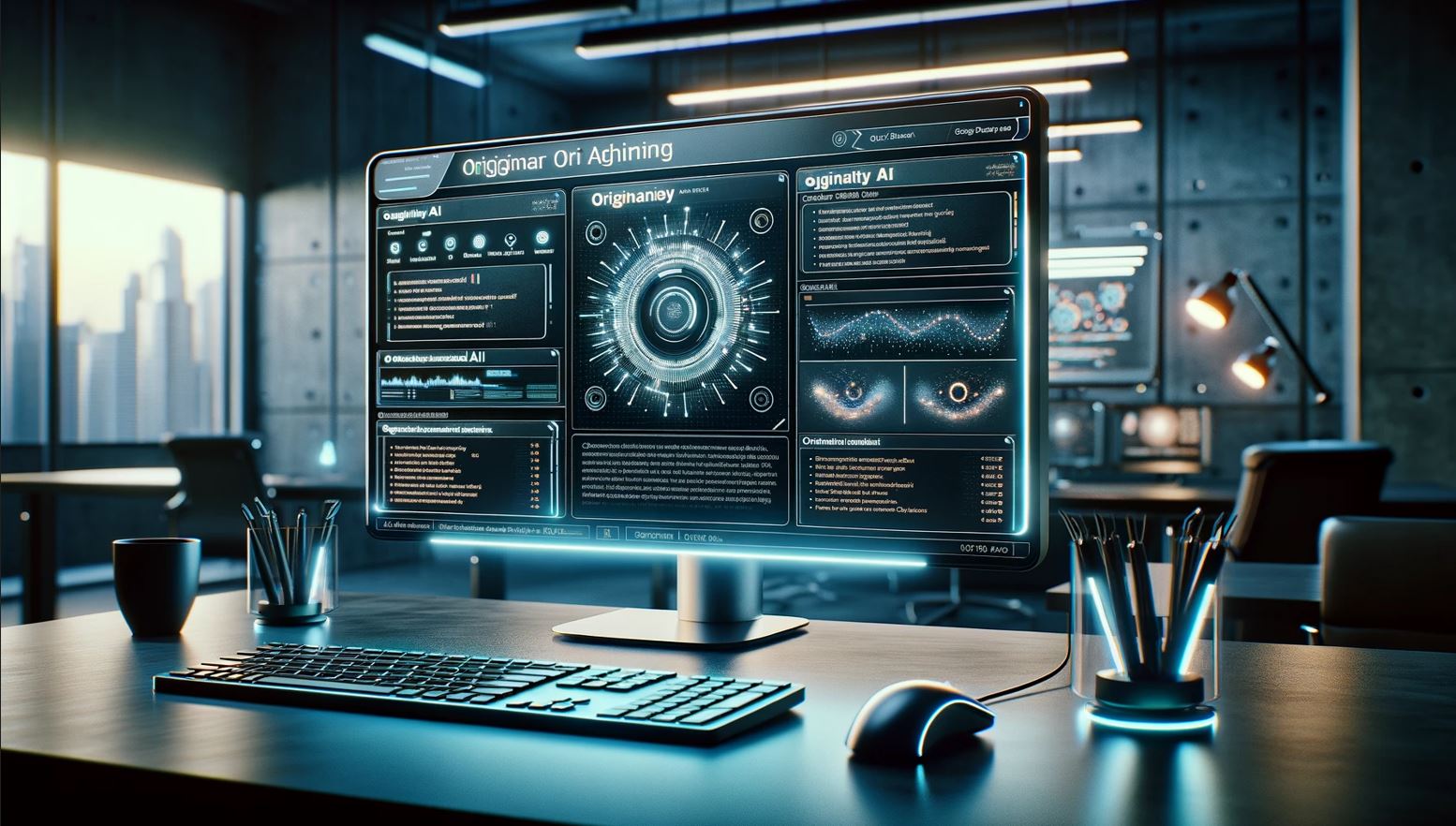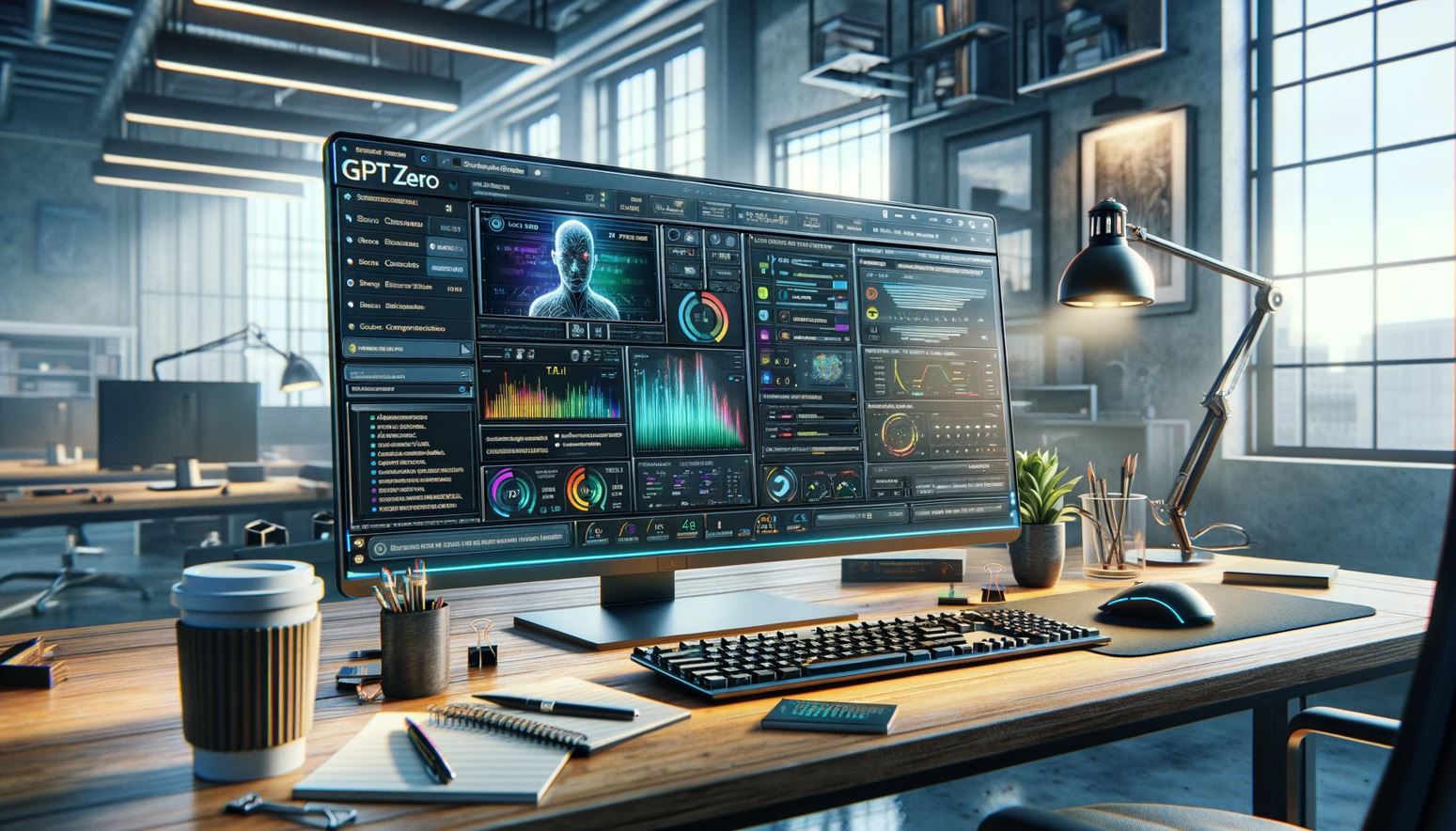With the increasing presence of AI-written content these days, how to check for AI writing has also gained some serious traction.
Nowadays, robots are getting slick at churning out text, so getting savvy about spotting fake from real is super important.

Try these new AI-powered tools:
- 5 Best AI Detectors To Unmask AI-Written Content With Accuracy
- 5 Best AI Writers To Boost Your Productivity And Content Quality.
- This "Secret AI Writer" Can Bypass AI Detection Like A Pro.
This post is all about giving you the scoop on spotting robot talk like a pro. Figuring out how to spot AI in your content is gonna make you a digital detective in no time.
Article At-A-Glance
- Making sure your stuff is legit and bot-free is super important today.
- Telling human talk from robot talk can be tricky, but it’s a skill you definitely wanna have up your sleeve.
- We’re gonna drop some tips and tricks on you for spotting that AI-written content without breaking a sweat.
- Keeping your content legit in this digital world is a must to keep your stuff looking real.
Table Of Contents
How To Check For AI Writing
Got a sneaky suspicion that a robot’s behind what you’re reading? A few tell-tale signs can help you call it out!
Let’s dive into the nitty-gritty of calling out AI writing.
Check For Weird Vibes In Tone And Style
Spotting AI’s handiwork starts with feeling out the tone and style:
- Look out for weird flips in how things are written. Like if it goes from chill to super formal out of nowhere.
- Keep an eye out for odd words or phrases that just don’t sit right.
- If sentences are all over the place—too simple or trying too hard—that’s a clue.
- Spot places where the talk goes from super casual to buttoned-up without any reason.
- Watch for random topic jumps or when things just don’t flow right.
Check For Accuracy
AI can be a bit off with the facts. Here’s how to catch it:
- Keep an eye out for stuff that just doesn’t sound right, like wonky data.
- Watch for bits where the facts don’t stay straight.
- AI can get sayings and common phrases all twisted.
- Look out for historical or cultural goof-ups.
Missing The Human Spark
AI-written stuff often misses that human warmth. Here’s what to look for:
- Check if the language feels all one-note. Real people spice things up depending on what they’re talking about.
- See if it feels like it’s not really talking to you. Real talk aims to connect.
- Notice if it’s missing those real-life touches, like stories or examples that hit home.
- Look for that personal flair in writing. Everyone’s got their style, but AI? Not so much.
Spot For Repetitions
Catching the same words or phrases over and over is a big hint you’re reading AI writing. AI has a habit of leaning hard on certain phrases or words, making the text sound less human and more machine-like.
This is a big deal because too much repetition can make something read like it was churned out by a robot.
- Read the whole piece carefully from top to bottom.
- Keep an eye out for words or phrases that keep popping up.
- Check if it feels like you’re reading the same sentences or ideas too often.
- Notice if it seems like the piece is just going in circles with the same info.
- Watch for patterns in how sentences are put together.
What’s Up With AI Writing?
AI writing is when computers get smart enough to write content by themselves. They use some serious math and learning tricks to spit out text that almost sounds like a person wrote it.
Whether it’s a simple report or a full-on story, AI writing is shaking things up. These digital pen pals pull in huge amounts of info, spot the patterns, and then kick out text based on what they’ve learned.
Breaking Down AI Writing
AI writing is all about using tech to create content. Tools like GPT-3 from OpenAI and the like can whip up text that’s pretty convincing, with just a bit of direction from us humans.
They’re getting better all the time because they gobble up massive data sets to figure out how language works.
These tools are smart, using machine learning to get closer and closer to writing like a real person does.
Inside The World Of AI Writers
AI writers take a ton of data and some smart algorithms to craft their words. They learn from millions—sometimes billions—of pieces of content to mimic human writing styles.
You toss them a few keywords or ideas, and they come back with something to read.
The secret sauce is machine learning, letting them act a bit like us humans, getting better as they soak up more info.
But even with all that data, they can’t come up with brand-new ideas from scratch like we can.
The Challenges Of AI Writing
AI writing isn’t perfect. One big issue is keeping the same tone and style which can be tricky, sometimes making the text feel off.
Also, getting the details right can be tough since AI might not get the finer points of complex topics.
Missing the human touch is another biggie—AI just can’t capture how we feel.
Missing the human touch is another biggie—AI just can’t capture how we feel.
Plus, they tend to repeat the same stuff, a tell-tale sign of computer-generated content.
When AI Writing Gets Wobbly
AI writing tools can struggle to keep the same vibe from start to finish. They don’t have the knack for tweaking their voice or mood depending on what’s needed.
It’s not rare to see something start off sounding super formal, then out of nowhere, it switches to a chill tone.
This kind of flip-flop can throw off the whole rhythm, leaving readers scratching their heads and weakening the whole point.
Trouble With The Facts
Sometimes, AI-written texts get their wires crossed on the facts. They might jumble up dates, mix up names, or get the backstory all wrong.
This usually goes down because AI doesn’t really “get” what it’s talking about. It’s just pulling from a pile of info to whip up answers.
Sometimes, it’s as if the AI is just throwing darts, guessing what to say next instead of knowing the real deal.
That’s why it’s super important to double-check the facts when you’re looking at something an AI cranked out.
Missing The Human Element
AI writing often lacks that personal vibe. That human touch is key for making stuff that really speaks to people.
Even though AI can do a lot, it can’t match the real-life experiences, feelings, and deep understanding of the world that humans have.
This gap means AI writing can fall flat when it comes to personal and emotional engagement.
You’re not likely to find AI writing that makes you burst out laughing or tear up the way something from a real person could. It sticks to its programmed patterns and misses the mark on the kind of creativity that comes from real human thoughts and emotions.
Presence Of Repetitive Language
In AI writing land, you’ll run into a lot of echo. Words or phrases keep coming back, adding nothing new.
It’s because AI doesn’t have the knack for shaking things up and tossing in a fresh word or idea here and there like a person would.
And it loves to lean on certain buzzwords or phrases it picks up from all the stuff it’s been fed. It’s a dead giveaway you’re reading something cooked up by a computer, not a person.
Tools To Spot AI Writing
Now, let’s talk about the gadgets that can help you spot when AI’s behind the writing.
I’m gonna show you the ropes on Originality AI and GPTZero. Both are ace at catching AI in the act.

Getting Smart With Detection Tools
AI detection tools are pretty slick at sniffing out when a machine’s done the writing. They take the text, break it down, and look for the little clues that a computer was at the keyboard.
These gadgets are getting sharper all the time, spotting the weird patterns or things that don’t quite line up—the kind of stuff that points to AI being the author.
Originality AI and GPTZero are big names for being on-point and reliable.
Originality AI digs through a massive stash of data to see if a piece is too similar to something else or if it’s got the hallmarks of AI work.
Originality AI digs through a massive stash of data to see if a piece is too similar to something else or if it’s got the hallmarks of AI work.
On the flip side, GPTZero checks out how the text flows, looking at things like how often it repeats itself or if the style seems off. These clues can tip you off to AI stepping in.
Using Originality AI For The AI Hunt
Originality AI is a top player when it comes to telling apart AI writing from stuff humans have done.
It uses some brainy tech to look at how the text is put together—things like pattern, structure, and the words it uses.
It goes through content with a fine-tooth comb, helping to flag up when AI had a hand in the writing.
Thanks to constant updates and being easy to get the hang of, Originality AI is a go-to for anyone trying to weed out AI writing from the real deal.
Giving GPTZero A Whirl
GPTZero isn’t just another tool in the shed. It’s a heavyweight when it comes to pointing out AI’s fingerprints on a piece of writing.
This tool’s got the smarts to pick up on the odd phrases and wonky sentences that usually mean a computer’s been trying to play writer.
With GPTZero, spotting whether something’s penned by a human or a bot becomes a breeze, keeping you one step ahead in making sure what you’re reading is legit.
Becoming A Pro At Spotting AI Writing
AI’s got its digital fingers in a lot of content pies these days. Figuring out where it’s left its mark takes a keen eye and the right set of tools, turning it into an essential skill for anyone surfing the digital waves.
With the right know-how and tools like Originality AI and GPTZero at your side, navigating this AI-filled landscape doesn’t have to be a cause for alarm. Stay sharp, and you can keep the line between human and machine writing clear as day!
Meet our resident tech wizard, Steve the AI Guy. Now, before you get any wild ideas, let’s clear up one thing – he’s 100% human! I mean, he’s got the work history to prove it. He spent a decade diving into the deep end of the tech industry doing business intelligence work, splashing around with two of the world’s largest business consulting companies, Deloitte and Ernst & Young. Learn More

